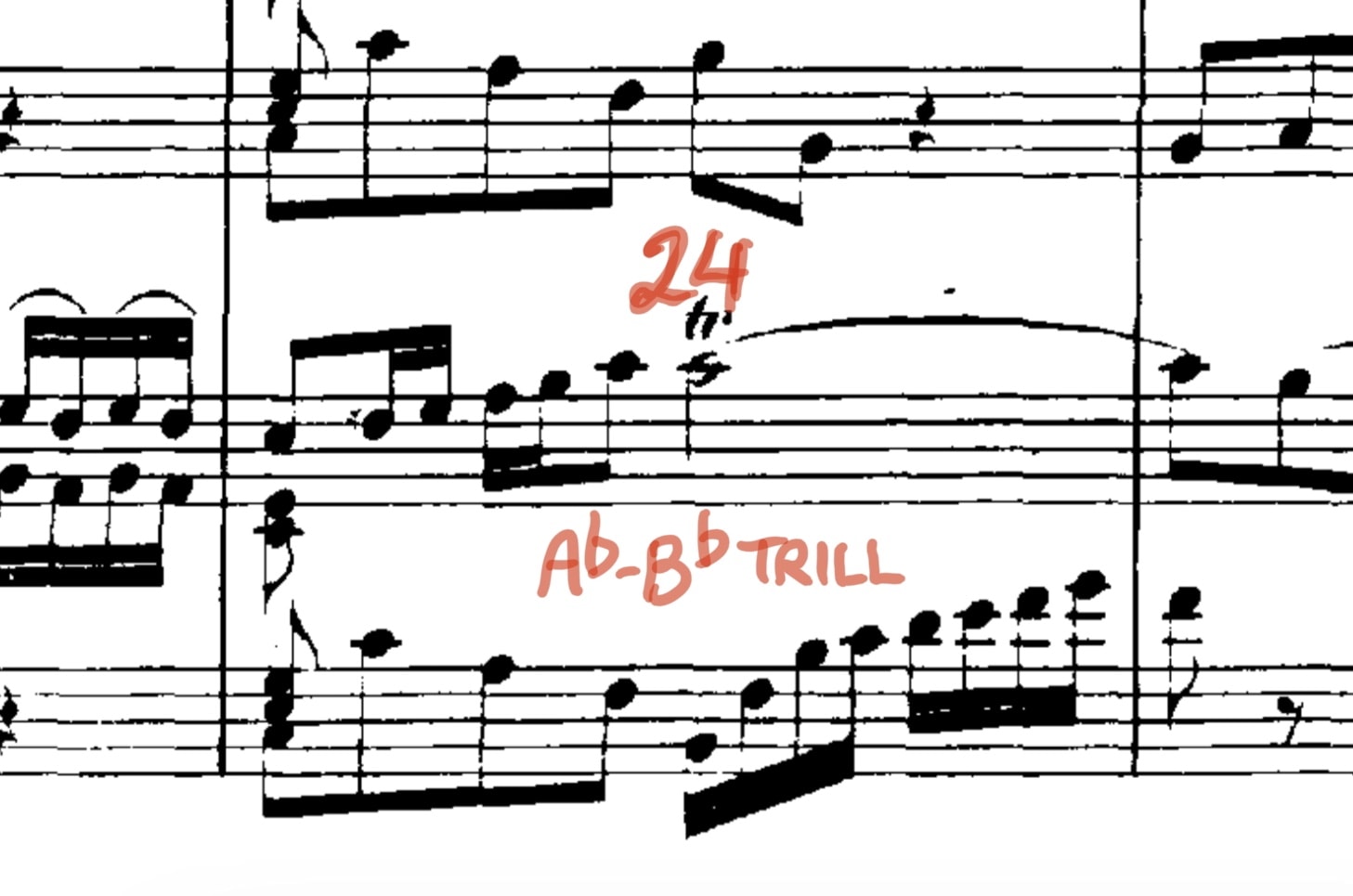
Trills can be daunting to some of us since it takes years of practice to develop enough finger strength/independence necessary for sustaining a fast trill. I could write pages on the subject but it’s more practical to focus on one helpful tip: using non-consecutive fingers. My students are often surprised at the idea of skipping a finger when playing trills or any neighboring notes yet professional pianists do that quite often.
If you watch this YouTube video of Nikolai Lugansky and his teacher, the legendary Tatiana Nikolayeva, playing the first movement of J.S. Bach’s double keyboard concerto in C minor, BWV 1060 you will see that around 40 seconds into the video Luganov expertly executes an Ab-Bb trill using the 2nd and 4th fingers:
To put this choice in perspective, let’s keep in mind that this is a conservatory-age pianist in excellent shape who could manage any fingering he wanted. Using fingers 2 and 4 in the context of 2 black notes makes the most sense: they are of similar length and naturally give his hand the needed rotation to loosen up the muscles for stamina.
The 3rd and 5th fingers work well between a lower black key and a white key to the right: this may seem awkward at first but if you adjust your hand position to a different angle and a higher wrist it will feel much better. The thumb is often used with the 3rd finger for white-key trills and the 13231323 combination is also very common. All examples above are intended to illustrate fingerings in the right hand where the trills mostly occur but the principle works even better for the left hand which is normally less dexterous.
So the next time you are faced with a trill, take a few minutes to try different finger combinations and don’t shy away from seeing how it feels to skip a finger. Happy practicing!